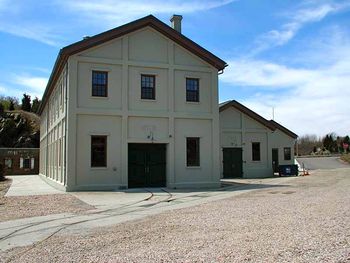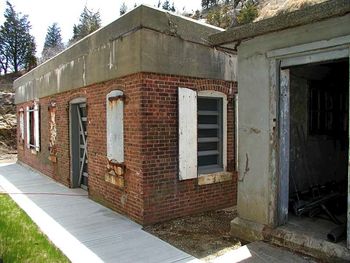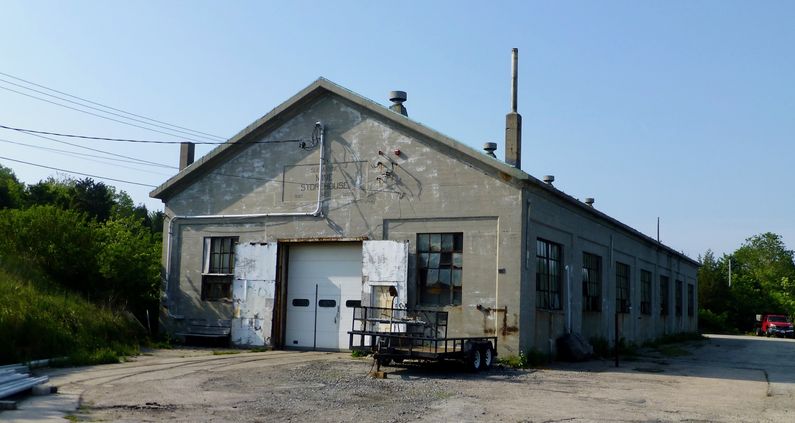Fort Wetherill
|
Fort Wetherill (1900-1946) - First established in 1900 on the site of earlier fortifications at Conanicut Island, Newport County, Rhode Island. Named in G.O. 43, 4 Apr 1900, after Captain Alexander M. Wetherill, 6th U.S. Infantry, who was killed in action 1 Jul 1898, at San Juan, Santiago, Cuba, during the Spanish-American War. Abandoned in 1946. Other earlier fortifications on this site include Fort Conanicut, Fort Brown (2), Fort Louis and Fort Dumplings
Endicott PeriodPart of the Harbor Defense of Narragansett Bay. Construction of the Endicott Period gun batteries began in 1898-1899 with the construction of Battery Varnum and Battery Cooke which were right next to each other. Both of these batteries were accepted for service on 15 Feb 1901. Construction of the next set began in 1901-1903 and included Battery Wheaton, Battery Walbach, Battery Dickenson, Battery Zook and Battery Crittenden. This second set was built adjacent to each other and constituted the main gun line for the fort with 2-12", 3-10", 5-6" and 2-3" guns all in a row. The batteries of this second set were also all accepted for service on the same day, 7 May 1908. 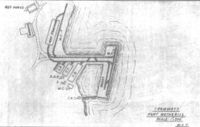 In 1905-1906 a mine casemate was built and accepted for service on 17 Feb 1906 at a cost of $9,370. This was the beginning of a mine complex that was expanded to include a Torpedo (mine) Storehouse (TS) and Cable Tank (CT) in 1909. A torpedo Loading Room (LR) and a Service Dynamite Room (SDR) were added in 1912. An additional mine storage building was added in 1940. The complex was connected to the wharf in Fort Cove by trolly tracks that facilitated the movement of the mines from the complex to the mine tenders. The post returned to caretaker/detachment status until World War I.
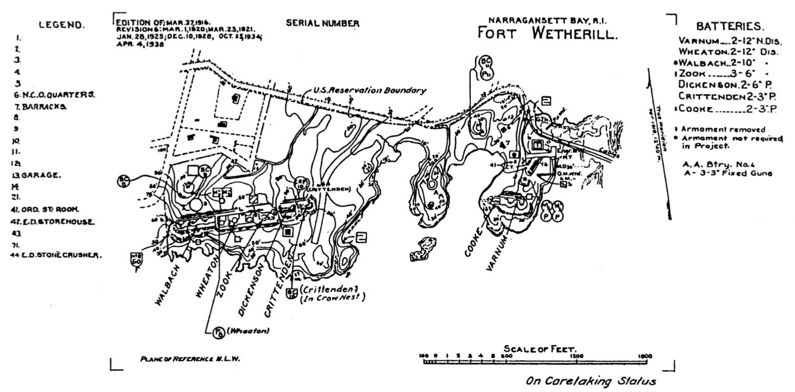
World War IFort Wetherill expanded significantly during World War I to include a large number of temporary World War I buildings which were often frame buildings covered with tar paper. The 1921 post map shows a significant number of temporary buildings just north of the main gun line that includes at least nine barracks, five mess halls, a post exchange, a Y.M.C.A., and a guardhouse. Further to the east are the six officer quarters and a hospital. None of these buildings appear on the 1938 post map. The fort was garrisoned by five companies of Coast Artillery from the Rhode Island National Guard during the war. After the war Fort Wetherill reverted to caretaker status and the temporary buildings were sold off to the public. Early in the war, the three 6" guns of Battery Zook were sent to France mounted on mobile carriages and Battery Zook was not rearmed. After the war, the guns and carriages of Battery Cooke were removed as a part of the disarmament program in 1920. In 1936 the remaining guns of Battery Walbach were sent to Fort H.G. Wright. As World War II drew closer Fort Wetherill was left with only four Endicott Period gun batteries operational and all of those were obsolete. The 1940 Modernization Program did not place any of the newer gun batteries on the fort. World War II
In 1940, post records indicate that only five permanent buildings remained (not including the mine buildings). By June 1941, a buildup similar to the World War I buildup had put up even more temporary buildings than in World War I. There were sixteen 66 man barracks, five mess halls, five day rooms, four company admin buildings, a guardhouse, a post exchange, an infirmary, and a theater. Two officers quarters and miscellaneous support buildings were also included. In addition to the coast defense role, the fort served as a training post in 1940-1941, and as a training center for German prisoners of war in 1944-1945. Only Battery Dickenson (2-6" guns) and Battery Crittenden (2-3" guns) remained operational throughout the war. Battery AMTB 923 (1) on Brenton Point was moved to Fort Wetherill in 1944 and emplaced in 3" anti-aircraft battery #1. The U.S. Army abandoned Fort Wetherill in 1946 after the end of World War II. The property remained abandoned until the State of Rhode Island took it over in 1972. Current StatusPart of Fort Wetherill State Park.
Sources:
Links: Visited: 29 May 2012 | |||||||||||||||||||||||||||||||||||||||||||||||||||||||||||||||||||||||||||||||||||||||||||
